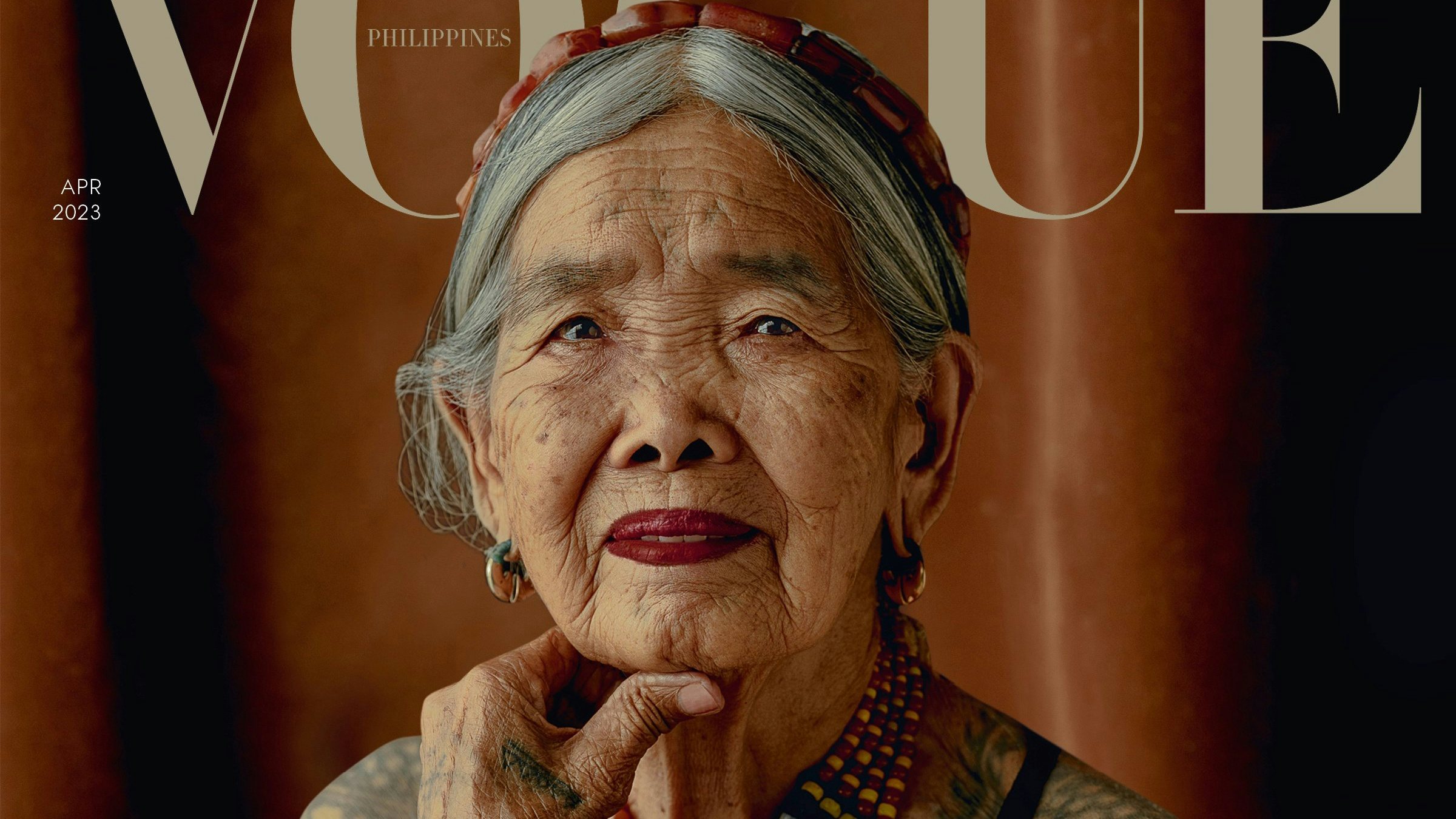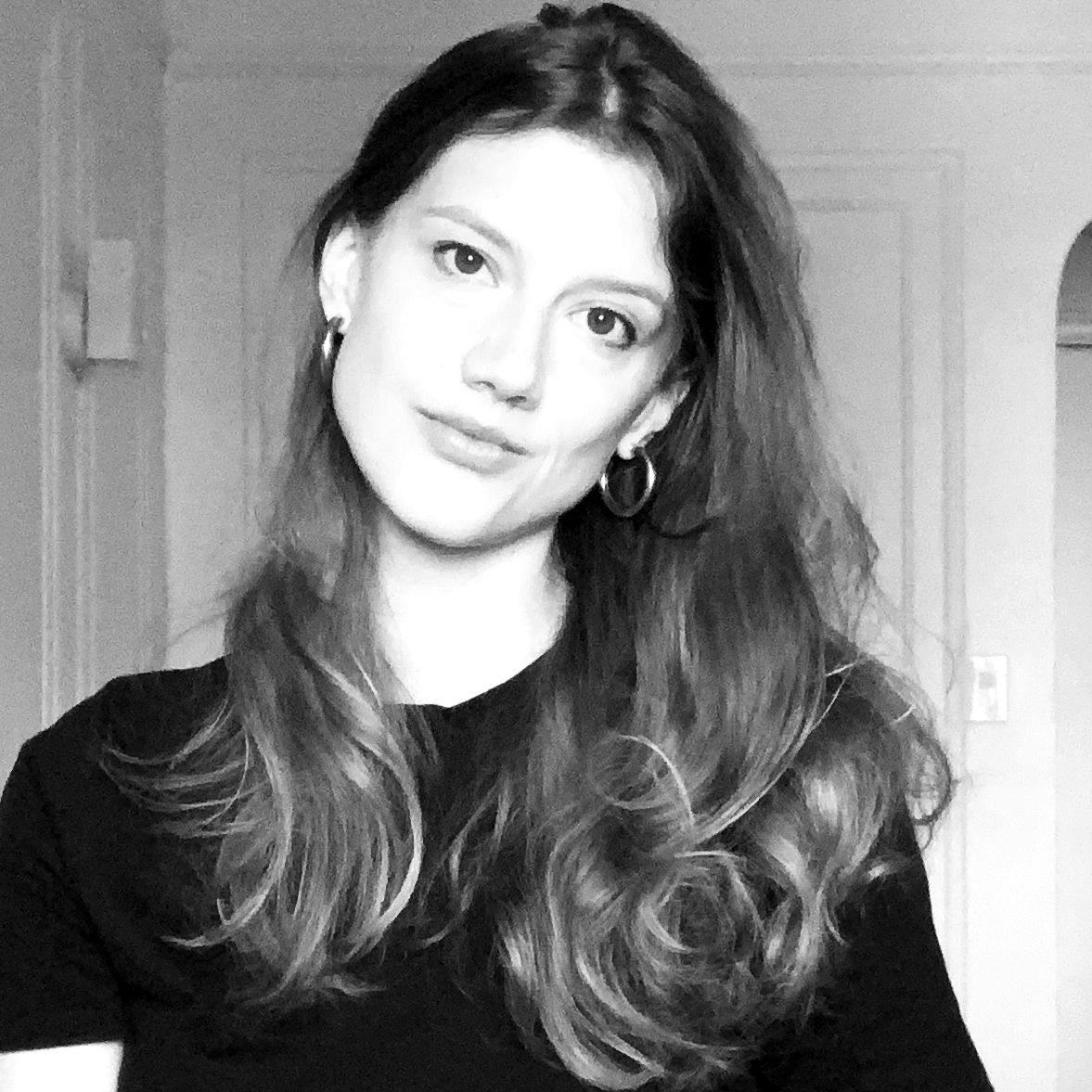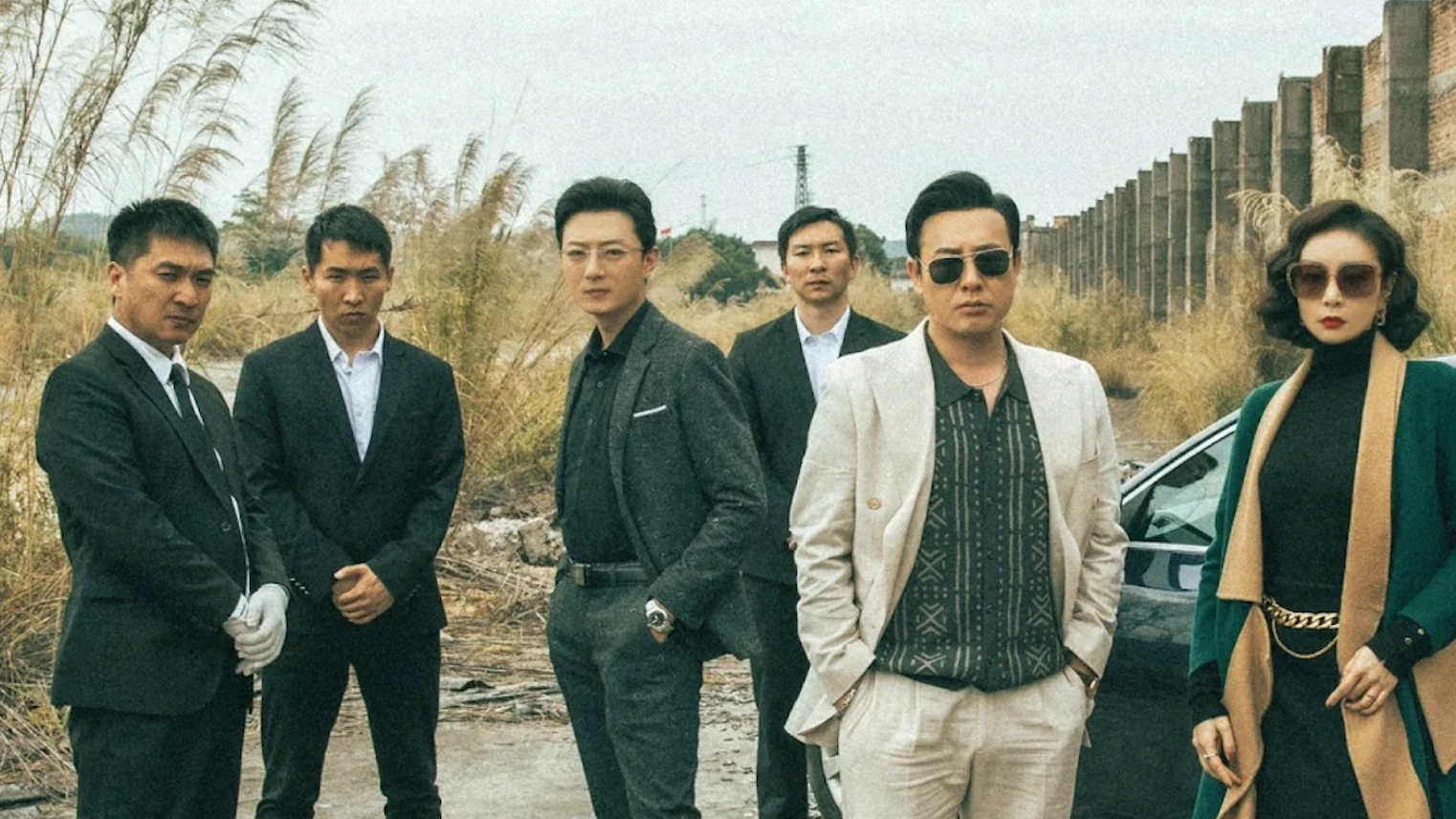Vogue Philippines made headlines when it revealed 106-year-old tattoo artist Apo Whang-Od as the cover star of its April 2023 Issue. Whang-Od set a new record for the oldest model to appear on a Vogue cover, beating out Judi Dench who appeared on British Vogue at the age of 85.
But she is not alone. More women with silver hair and — dare we say it — wrinkles are appearing in exalted fashion images.
In 2022, Sports Illustrated featured silver-haired Maye Musk on the cover of its swimsuit edition. At the start of 2023, Burberry tapped 86-year-old Vanessa Redgrave for its latest campaign, while New York City-based Asian American art collective CFGNY scouted retired real estate agent Helen Chan to be a model in its fashion show.
And after winning the Best Actress Academy Award this year, Michelle Yeoh, 60, became the new face of La Mer and will receive the Women in Motion Award from Kering at the Cannes Film Festival, which takes place May 16 to 27, 2023.
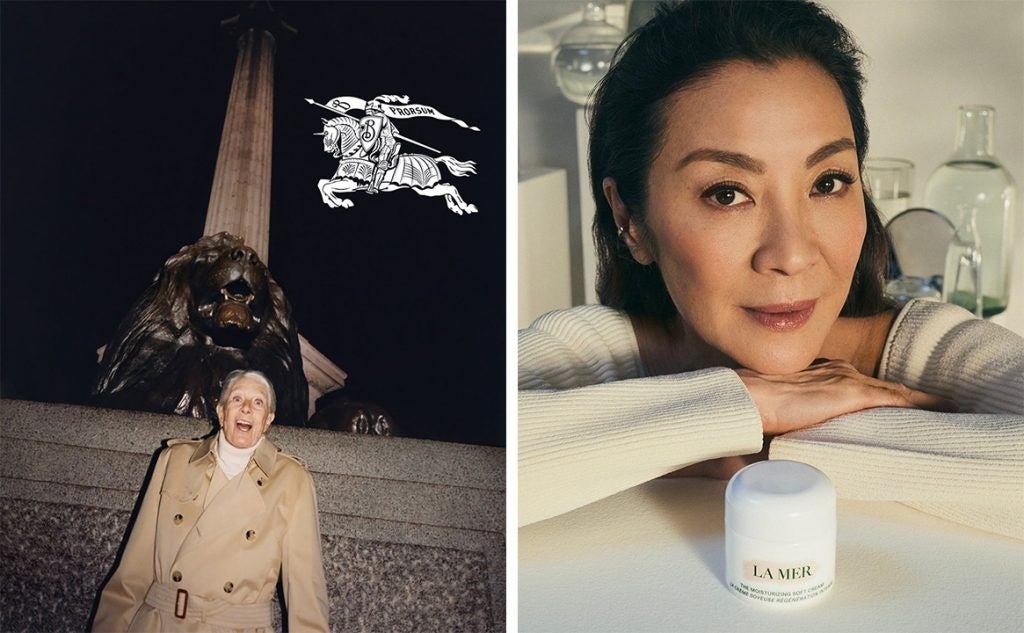
The growing prominence of mature faces in fashion is, on the one hand, long overdue recognition that it’s mostly middle-aged consumers who have the money to purchase luxury goods. But even with the increased visibility of faces like Musk or Whang-Od, older models are still very much an outlier in a fashion culture where teenage models and cosmetic procedures to remain youthful remain the norm.
“We have this really bizarre situation, where typically the group of women and indeed men who have the money to buy luxury to any degree are older, and yet the industry obsesses about the young,” says Anna Murphy, fashion director of The Times and author of newly released book Destination Fabulous: Finding Your Way to the Best You Yet.
Women of more advanced ages have been celebrated as fashion icons for years, Murphy says, from Joan Didion in her famed Celine ads to Linda Rodin and Iris Apfel, who still regularly launch new products and collaborations at age 74 and 101, respectively. And those faces and names can add a certain value to a fashion campaign or magazine cover no matter the intended audience.
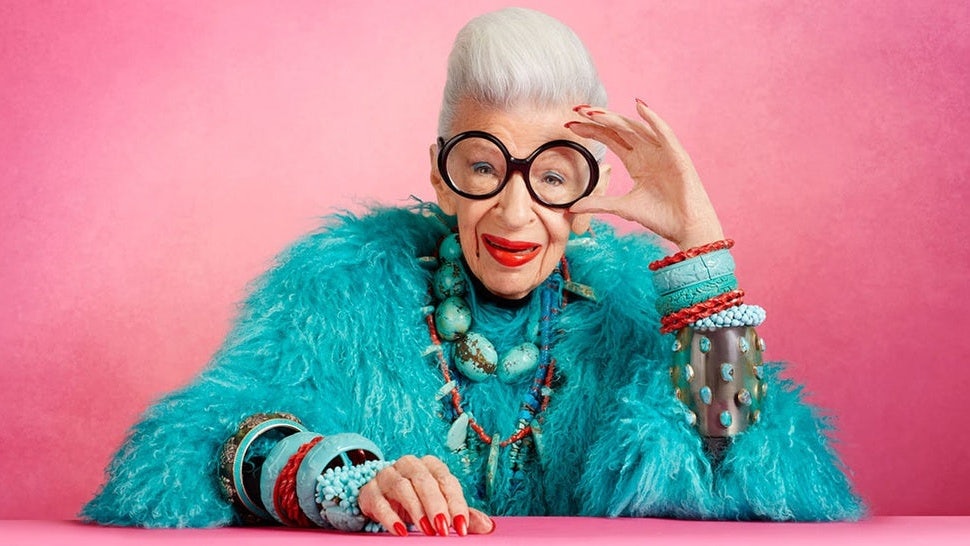
“Someone like Vanessa Redgrave, or indeed Maye Musk or [Apo Whang-Od] on the cover of Vogue Philippines, they've got a backstory in a way that an 18-year-old just doesn't have,” says Murphy. “They exude intelligence, the intelligence of a lived life, and I think brands are wanting to add extra dimensions into their own brand narrative.”
The rise of older models also appeals to Gen Z’s values of inclusivity.
“Brands are playing into youth’s values and one of Gen Z’s top priorities is diversity and inclusion (Damp;I). This cohort of consumers is the most racially and ethnically diverse generation to date. The demand for Damp;I extends to tackling ageism in advertising and marketing,” says Elizabeth Tan, insight strategist at WGSN. “TikTok also has a role to play here as the platform has become a space for intergenerational creators and users. What was once a platform dominated by Gen Z has since expanded to become a hub for creators of all ages.”
But while the glamorization of older women is notable in a culture where young models are the default, Murphy adds that the very concept of youth culture is still a relatively new phenomenon.
“It's easy to forget that that's a fairly recent invention that comes out of the post-war era, the 50s and the 60s and the 70s, this invention and use of youth as a source of power. And that was, in many ways, an important correction to a hierarchical society that put old people at the top and younger people at the bottom. But we've overcorrected,” she says.
At the same time that youth culture became the epicenter of pop culture, technological advances made the pursuit of youth more attainable for consumers — and more profitable for the cosmetics industry. Botox was first approved for cosmetics use only in 1989, and more anti-wrinkle injections like Xeomin have arrived on the market since then. Commercial hair dyes have become safer and more normalized in recent decades, while skincare technologies developed in Asia have spread across the globe.
But while surgery and skincare routines in the pursuit of youth have become more accessible, the burden of maintaining a youthful appearance, particularly for women, has also become more apparent, and, for some consumers, distasteful. Last year, Kim Kardashian faced criticism for admitting she would “eat poop” if it meant she would look younger, while Linda Evangelista admitted to disfigurement as a result of CoolSculpting procedures gone awry.
In such an environment, fashion’s predominant fantasy of impossible thinness and youthfulness began to appear “decades old,” Vanessa Friedman wrote in the New York Times in response to Evangelista’s return to the cover of British Vogue. “A generation of designers are increasingly building their names, businesses and communities on just such a message, filling their runways not simply with traditional models, but with friends and family of all shapes, sizes, ages and gender identities — with wrinkles and bulges and the signs of life lived.”
Anna Murphy, fashion director of The Times, and model Maye Musk in Paris.
At the start of 2023, subdued, mature styles, widely dubbed "quiet luxury" have become fashion’s buzziest styles, exemplified by Gwyneth Paltrow’s courtroom attire and Succession’s understated corporate attire. Tan notes that simple styles coded as #recessioncore have also trended on TikTok among Gen Z shoppers, but the move towards more grown-up dressing also makes mature models a more natural fit for campaigns and covers.
“The shift in product away from streetwear's influence, which in the fashion industry is generally associated with youth, does create more opportunities for older models,” said Tan. “Naturally, the odds of seeing more mature models will increase as streetwear's influence in campaigns wanes, as more brands will be using products that can be represented authentically by older women in a way that speaks to all consumers.”
Murphy is hopeful that fashion will continue to embrace and normalize maturer women rather than use them as a flash-in-the-pan trend. But she likens the handful of high-profile examples to the use of plus-size models in fashion, where a few plus-size models obscure the fact that the vast majority of models are still very thin.
“The very fact that we're talking about it is indicative of the degree to which it's quite an outlier phenomenon,” she says.
